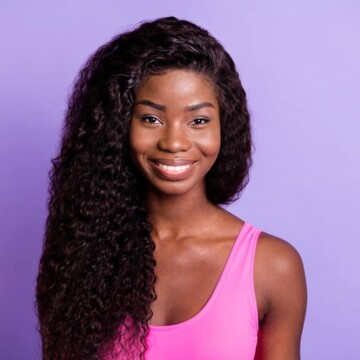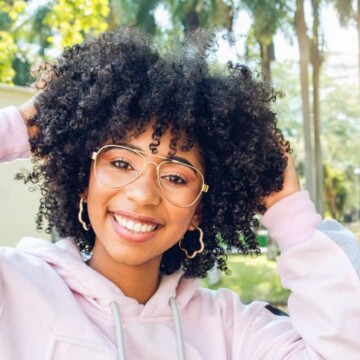
Are you dying to try locs but not sure how to get started? You’re in the right place. There are many ways to start locs, and not every method will work for every hair type, routine, and desired loc appearance.
So, it’s essential to know the ins and outs of all of them before selecting one. In this article, we’ll take a close look at each method, the pros and cons, and more. Let’s get right into it!
Table of Contents
- 1 Key Takeaways
- 2 1. Comb Coils
- 3 2. Braids
- 4 3. Two-Strand Twists
- 5 4. Backcombing/Teasing
- 6 5. Freeform/No Manipulation
- 7 6. Loc Extensions
- 8 7. Interlocking
- 9 Frequently Asked Questions
- 9.1 How Much Does It Cost to Start Dreads?
- 9.2 How Long Does It Take To Start Dreads?
- 9.3 How Long Should Your Hair Be to Start Dreads?
- 9.4 How Long Does It Take To Start Freeform Dreads?
- 9.5 How Much Do Salons Charge to Start Dreads?
- 9.6 How Do You Part Your Hair to Start Dreads?
- 9.7 How Long Does It Take To Start Wick Dreads?
- 9.8 Related Articles
Key Takeaways
- Loc Starting Methods. There are various methods to start locs, each suitable for different hair types. Popular methods include comb coils, two-strand twists, backcombing, free-forming, extensions, braids, and interlocking. These methods cater to different hair lengths and textures. They offer options for curly hair, thinning hair, and those seeking a unique look.
- Considerations for Hair Type and Length. When choosing a starter loc style, you should consider the length of your hair and its texture. For instance, comb coils are ideal for shorter hair. Two-strand twists require at least 4-5 inches of hair. The texture of your hair also influences your best loc starting method. For example, some techniques like backcombing are more suited for straight hair.
- Maintenance and Care. Proper care and maintenance are crucial for developing mature locs. Avoid heavy products and use proper maintenance techniques like palm rolling or interlocking. Some starter loc types, like braids, are more durable if you have an active lifestyle.
- Aesthetic and Practical Preferences. Personal preference plays a significant role in choosing a loc method. Some methods, like freeform locs, offer a more natural and unique look. Other methods provide a more uniform appearance, like interlocking. The size of your locs, whether you prefer thick locs or thinner locs, also influences the decision.
- Long-Term Commitment and Patience. Starting locs is a commitment that requires patience. The first stage of the loc process can vary in duration based on the method chosen. The result, whether it's smaller locs or larger dreads, depends on the preferred method. Proper care throughout the loc journey also plays a critical role.
Keep reading for 7 different methods to start locs.
1. Comb Coils
Comb coils are one of the most commonly used methods to start locs. They create a cylindrical base from which locs can form.
To create coils in your hair, you will need a comb and some gel or styling cream. You’ll create the coils by twisting the comb in a circular motion as you move down the length of your natural hair. Watch this tutorial to learn how to start locs with comb coils.
This method is ideal for people who want traditional locs. You only need a couple of inches of hair to start locs with comb coils.
Comb Coil: Pros and Cons
Comb coils are the ideal starter loc method for tons of people. Keep reading to find out if the pros outweigh the cons.
Pros
- Anyone can do them. All it takes to do comb coils is to twist a rattail comb in a circular motion. With some practice, you can do your own comb coils and save money by bypassing a professional starter loc install.
- Comb coils result in clean, cylindrical locs.
Cons
- If you get your comb coils wet, they could unravel and get frizzy. Even the steam from your shower can ruin them. This means you have to be very careful with your natural hair if you want to keep the frizz at bay.
- You don’t have to wait a long time for comb coils to begin to look like dreads. It could take as little as a couple of months.
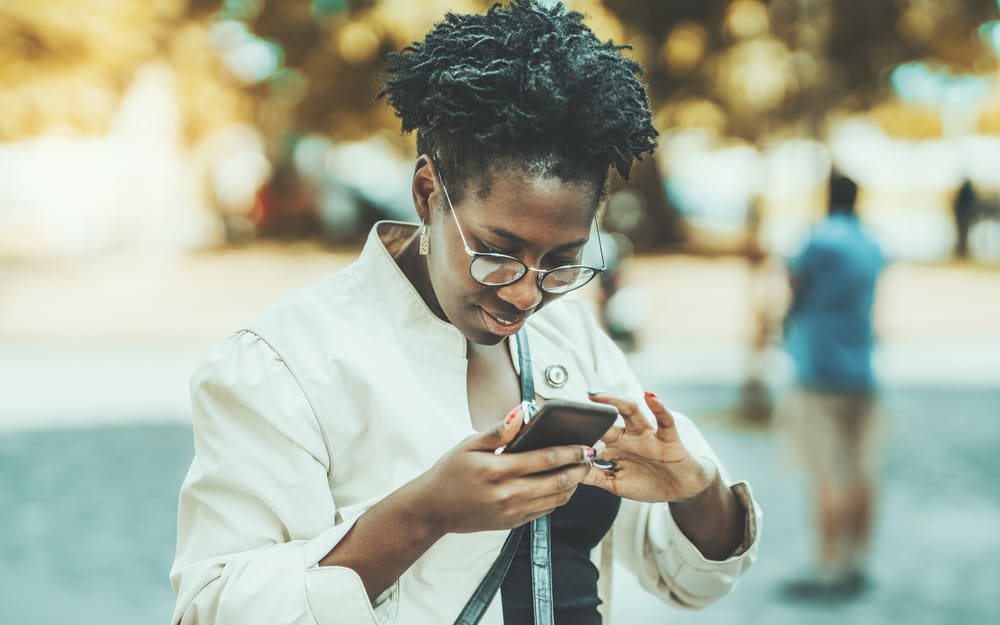
2. Braids
Braiding is an excellent DIY starter loc method that requires you to part and braid (three-strand plait) sections of hair. Left alone, the braids will swell and turn into locs.
Active people who sweat on their scalp or go swimming often choose braid locs, as they are relatively resistant to unraveling. You’ll need at least 5 to 6 inches of hair to start your locs with braids. And when it comes to maintaining braid locs, you get to choose from palm rolling and interlocking.
Braid Locs: Pros and Cons
Though many love braid locs, they are not perfect. Here are some pros and cons you should know about:
Pros
- Braid locs tend to hold up better than other starter loc types, allowing you to wash your locs as often as you’d like.
- Braid locs tend to stay stretched out, which means you get to enjoy your length.
Cons
- Braid locs have the tendency to result in flat locs, which some people don’t particularly like.
- It can take more than a year for the braid pattern to disappear. Your locs may not look like locs until then.
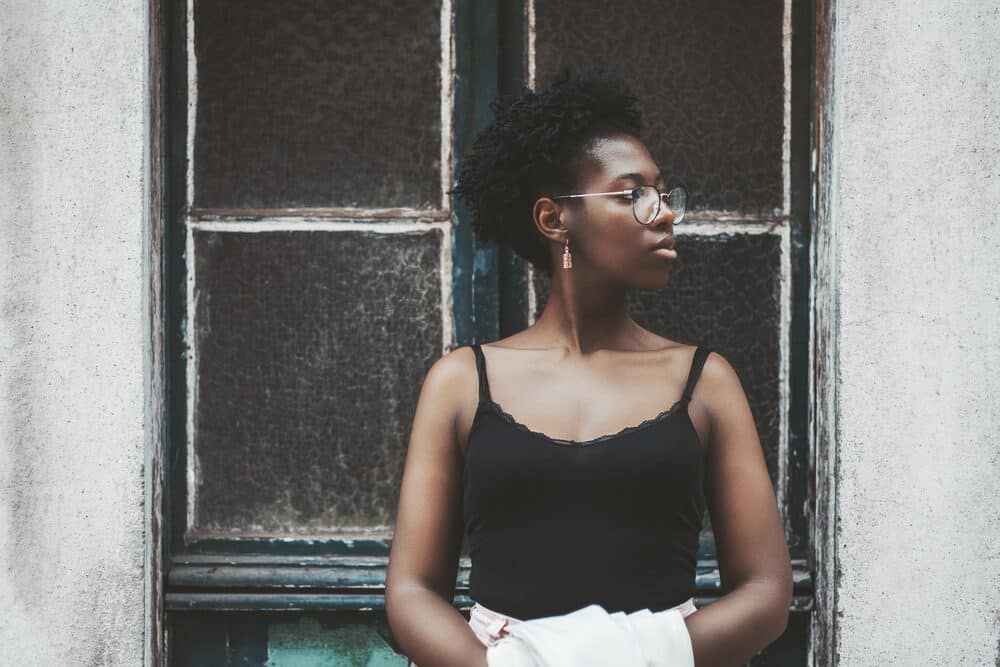
3. Two-Strand Twists
Most people who start their locks themselves opt for two-strand twists, which are super easy to do. To do two-strand twists, all you need to do is section your hair according to your desired loc size, divide each section in half, and twist from roots to ends.
Twists generally create thicker locs than some of the other methods in this article. You need at least 4 to 5 inches to start your locs with two-strand twists.
Two Strand Twist Starter Locs: Pros and Cons
Two-strand twists starter locs are a favorite among loc’d Kings and Queens, but that doesn’t mean that they work for everyone. Let’s get into the pros and cons to see if they’re a good fit for you:
Pros
- Anyone can do two-strand twists, which makes them a great way to DIY your starter locs.
- Twists make for fluffier locs than other methods.
- Two strand twists give your locs a strong foundation.
Cons
- It can take quite some time for the twist pattern to disappear. Some have to wait years for their locs to actually look like locs vs. twists.
- In the first few weeks, your two-strand twists could repeatedly unravel, which can be annoying. However, all you need to do is twist them back up.
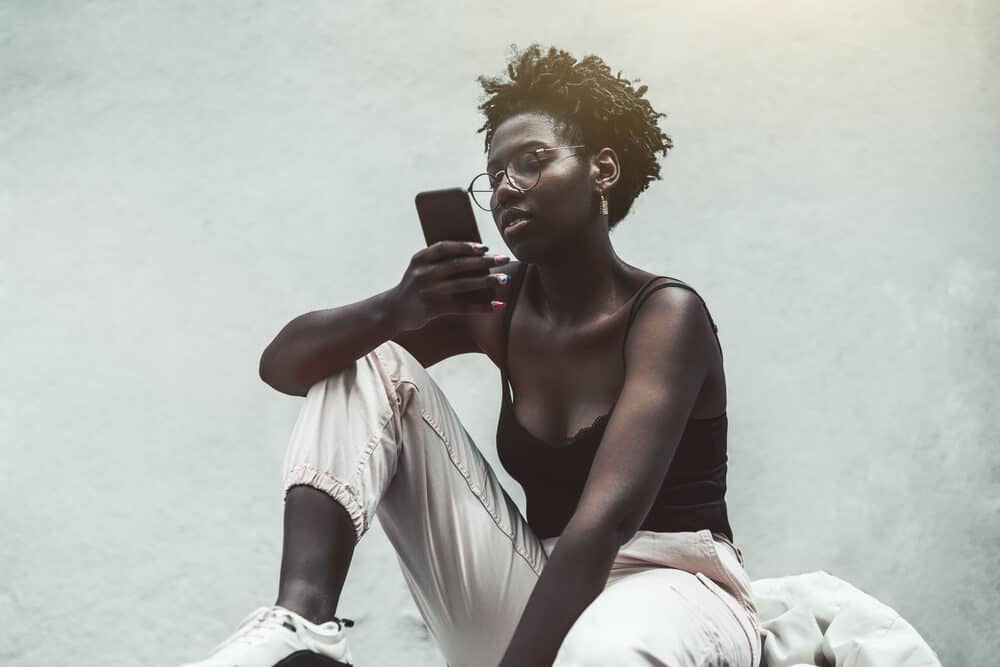
4. Backcombing/Teasing
Backcombing is often used to help people with straight hair achieve locs. To create a loc using this method, you’ll tease sections of hair and then palm roll them.
Over time, the locs will gradually mature and fill out, forming a strong loc. Here’s a tutorial on how to backcomb locs.
Backcombing/Teasing: Pros and Cons
Let’s get into the advantages and disadvantages of backcombing/teasing:
Pros
- These locs can be maintained by palm rolling.
- The method creates instant locs that don’t unravel.
Cons
- It takes quite a bit of time to backcomb locs, which can be tedious.
- You won’t get to enjoy every step of the loc maturation process.
- After washing your backcombed locs, they may take a long time to dry.
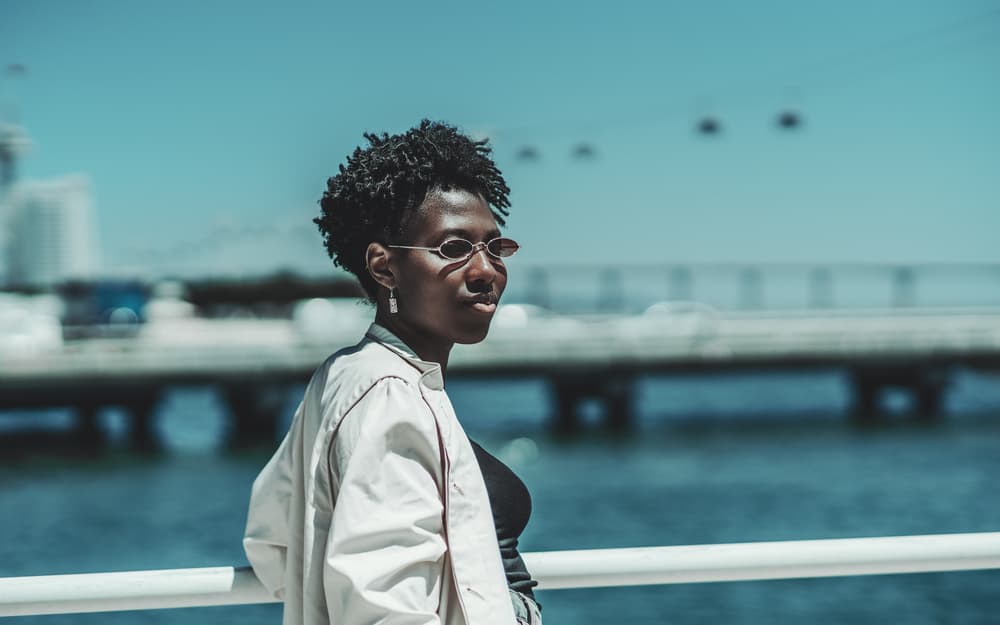
5. Freeform/No Manipulation
The freeform loc technique is becoming increasingly popular as people realize the mental and emotional benefits of letting their hair do its own thing.
All you’ve got to do with freeform locs is stop combing your hair. Eventually, your strands will tangle, and locs will form. You can do freeform locs on just a couple of inches of hair.
Freeform Locs: Pros and Cons
Though freeform locs are super laid back, you could still run into some issues. Let’s take a look at the good and bad of freeform locs in the below sections:
Pros
- Freeform locs don’t require you to retwist or interlock your new growth. That means you can progress through your loc journey without worrying about products, retwisting methods, or anything else. Your loc journey will be very chill.
Cons
- Freeform locs can take quite a bit of time to loc up, and some sections of your hair may take even longer.
- You won’t have any idea of how your locs will turn out. You have to allow your hair to do its own thing, and this uncertainty is often too much for people to deal with.

6. Loc Extensions
Loc extensions allow you to have your locs right then and there. They require you to attach human
Loc extensions can be maintained with either interlocking or palm rolling. You can find loc extensions in various colors, lengths, and widths, which means there’s a set of loc extensions perfect for everyone. Here’s a video showing how to install loc extensions.
Loc Extensions: Pros and Cons
Read the pros and cons of loc extensions below:
Pros
- You don’t have to go through the dreaded “Ugly Stage” of loc maturation. You get to skip right over it and go straight to the mature stage.
- Loc extensions work for just about any hair type, so long as your hair isn’t thin or breaking.
- Loc extensions come in many different colors and textures.
Cons
- Because you won’t go through all of the loc maturation stages, you may not be able to relate to the bulk of the Loc Community, who locked their hair using more traditional methods.
- Loc extensions are a bit more controversial than some of the other methods because they incorporate fake hair.
- If the wrong size loc extensions are used, you could end up with roots that are thicker or thinner than the extensions.
- Loc extensions are costly.

7. Interlocking
Interlocking is another very widely known and practiced method of starting locs. It involves pulling your hair through its roots repeatedly to create a base for your locs to grow from.
This method is used for microlocs and Sisterlocks as well as small to medium-sized traditional locs. Interlocking is perfect for anyone who prioritizes hair neatness. You can wash your hair, work out, or rinse your hair whenever you want with interlocks.
There are 3 interlocking variations: the 2-point, 3-point, and 4-point rotation. Each of them requires you to pull your hair through your roots using a different pattern.
Due to the intricacies of each interlocking rotation, many opt for easier ways to start their locs. But if you want to learn about how to interlock your hair, watch this video.
Interlocked Starter Locs: Pros and Cons
Here are the pros and cons of interlocked starter locs:
Pros
- Interlocks can be washed or rinsed whenever you want.
- The technique can be used on any hair type.
- You don’t have to use gels or creams on interlocks.
- You can learn how to do it yourself after watching a few videos.
- Interlocks do not unravel easily.
Cons
- When done incorrectly, interlocks can cause breakage and thinning at the roots or along the length of your locs.
- They can leave a pattern in your locs that takes years to go away. In some cases, the pattern never goes away.
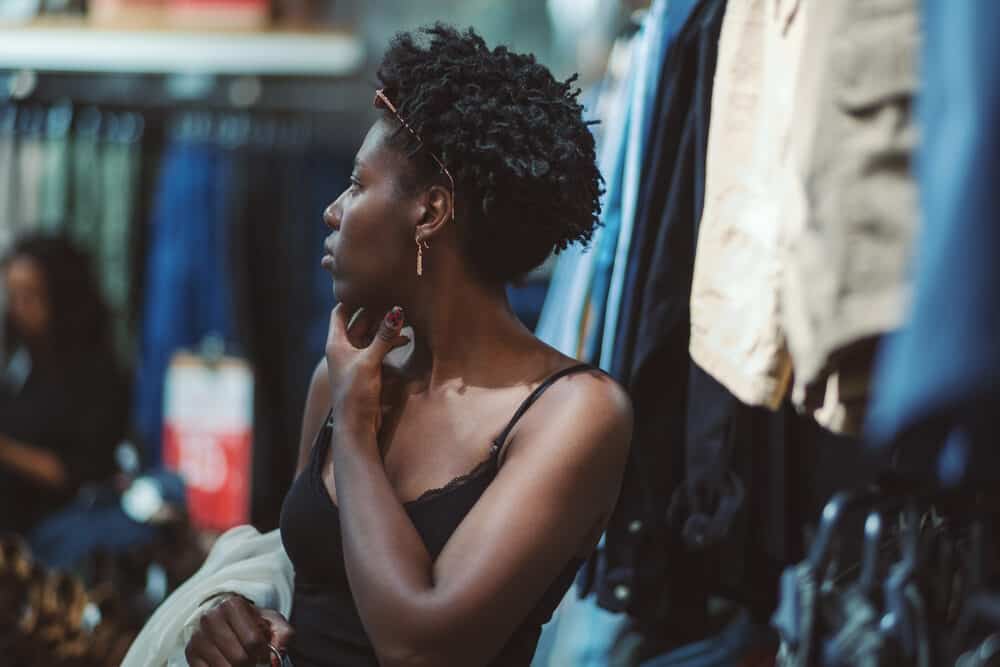
Frequently Asked Questions
Do you have questions about how to start locs? Our frequently asked questions section has answers to common inquiries.
How Much Does It Cost to Start Dreads?
The cost of dreads can vary greatly depending on the location of the salon, the experience of the stylist, and the method used to create the dreadlocks. On average, the cost can range from $50-$500 or more. Factors that can impact the cost include the length and thickness of the hair, the type of hair, and the desired style.
How Long Does It Take To Start Dreads?
The time it takes to start dreadlocks depends on your hair and the style you want. On average, the process can take anywhere from 4-8 hours or more for shorter hair and up to 12 hours or more for longer hair. It's important to note that starting dreads is a time-consuming process that requires patience and persistence.
How Long Should Your Hair Be to Start Dreads?
It depends, but generally, hair should be at least 4 inches long to allow for proper matting and locking. However, some methods, such as the interlocking method, can be used on hair as short as 2 inches. If you have very short hair, it may need to be grown out before starting dreads.
How Long Does It Take To Start Freeform Dreads?
Freeform dreads can take anywhere from 6 months to 2 years or more to form, depending on the individual's hair type. Freeform dreadlocks are created by allowing the hair to naturally matt and lock over time. This means that the process is completely natural and can take longer than other methods, but it results in a more organic look.
How Much Do Salons Charge to Start Dreads?
Salon prices for dreads vary greatly between $50-$500 depending on several factors, including the location and the experience of the stylist. Some salons may also charge extra for additional services, such as wash and blow-dry or a deep conditioning treatment. It's best to research different salons and compare prices to find the best option for your budget.
How Do You Part Your Hair to Start Dreads?
The method of parting your hair to start dreads depends on your style and your dreadlocking method. Some common methods include square parting for a neat, symmetrical look, zigzag parting for a more organic and free-form look, random parting for a more natural and random appearance, and comb coils for neat and tight dreads.
How Long Does It Take To Start Wick Dreads?
On average, Wick dreads can take anywhere from 4-12 weeks to form, depending on the individual's hair type and the rate of hair growth. This method involves using a natural or synthetic wick to create a core that the hair is twisted around. It's faster than traditional dreadlocking methods, as the hair is locked into place more quickly.
- Palm Rolling vs Interlocking
- Sisterlocks Maintenance
- How Do You Detox Dreads at Home
- Best Method To Start Locs
You now have all the information you need to help you choose the starter loc method that’s best for you. We wish you the best as you start your locs!

